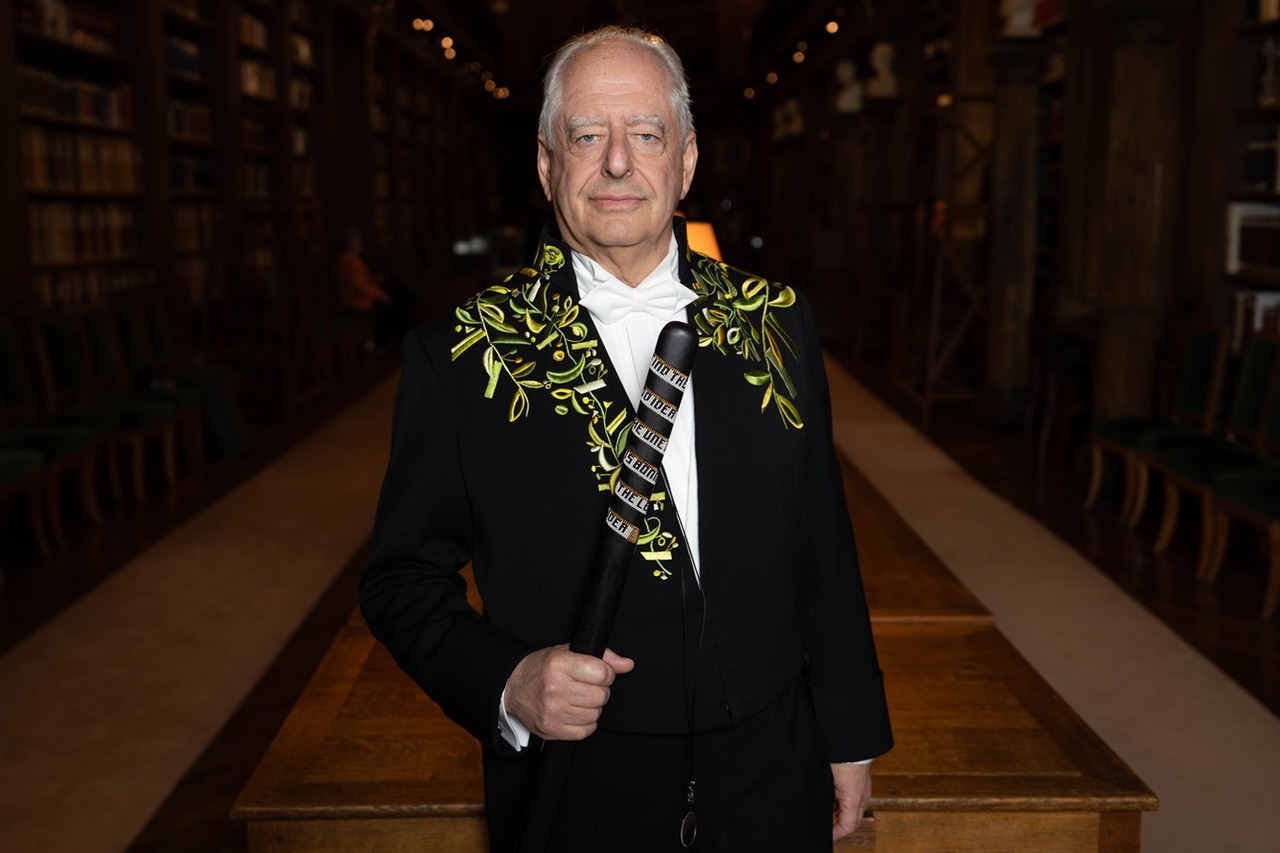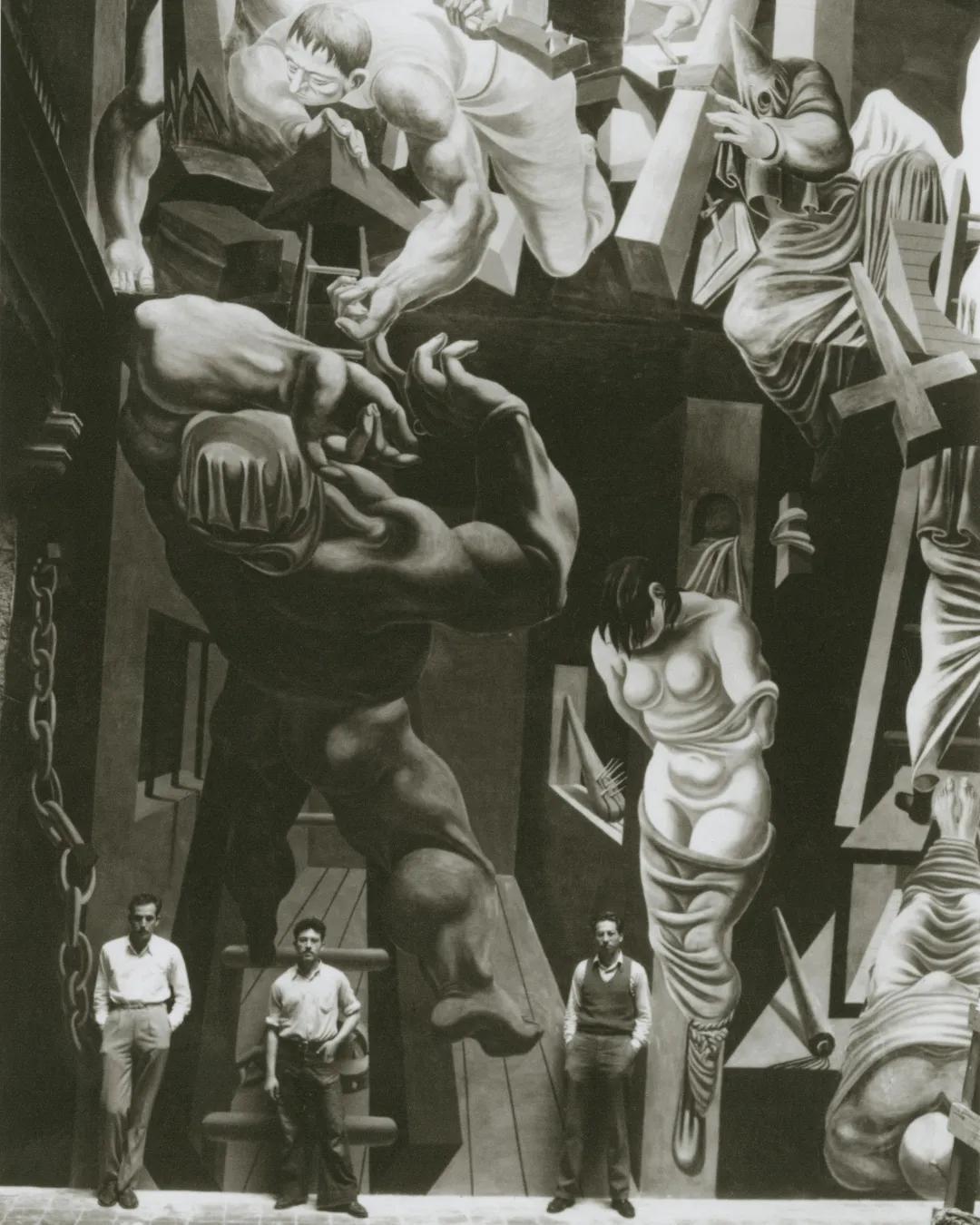Alexander Calder’s ‘Slender Legs’ in Monaco
View a hallmark piece by the American artist in the Jardins des Boulingrins, adjacent to our gallery
Calder’s grand-scale piece ‘Slender Legs’ (1959) is now on view in the historic heart of Monaco through 30 November. The standing mobile—a marriage of the artist's two signature sculptural innovations—is composed of lithe, free-moving ‘arms’ counterbalanced by an immobile triangular base, or the work's titular ‘legs.’ Five sharply angular elements coming off the sculpture’s arms are unfixed, poised to shift and slip in a breeze.

Alexander Calder, ‘Slender Legs’, 1959 © 2023 Calder Foundation, New York / Artists Rights Society (ARS), New York. Photo: Stefan Altenburger

Alexander Calder, ‘Slender Legs’, 1959 © 2023 Calder Foundation, New York / Artists Rights Society (ARS), New York. Photo: Stefan Altenburger
A master of many materials and techniques, Calder created a diverse body of work that represents a career-long interest in voids and volumes. Calder’s experience as an artist with a direct and intuitive process gave him the unique skills to imagine and create new forms of art that radically alter our experience of space. His revolutionary techniques allowed him to suspend his ‘mobiles’ from ceilings and create ‘stabiles’ of immense complexity.
Calder produced ‘Slender Legs’ at a major transitional moment in his oeuvre. At the time he began to turn his attention from more intimate works to sculptures executed on a grand scale—a shift that he would describe one year later in 1960 as an ‘agrandissement’ in his work. Calder would spend 1957 to 1959 working on several important large-scale commissions, including ‘The Whirling Ear’ for the United States Pavilion of the Brussels Universal and International Exhibition; ‘Spirale’ for the UNESCO headquarters in Paris; and ‘.125’ for Idlewild Airport (now known as John F. Kennedy International Airport) in New York.

Alexander Calder, ‘Slender Legs’, 1959 © 2023 Calder Foundation, New York / Artists Rights Society (ARS), New York. Photo: Stefan Altenburger

Alexander Calder, ‘Slender Legs’, 1959 © 2023 Calder Foundation, New York / Artists Rights Society (ARS), New York. Photo: Stefan Altenburger
Like these contemporaneous public works, ‘Slender Legs’ invites a dynamic viewing experience. The viewer is pulled into the space of the sculpture, their sense of scale disoriented by its large size as its predilection toward motion poses a challenge to any notions of fixity. The work’s carefully balanced forms could be set into motion at any moment, introducing the magical element of chance that makes the artist's mobile sculptures so enchanting. In ‘Slender Legs’ Calder creates an object that is grand yet personal, rooted yet kinetic, and dynamic yet commanding: a testament to his unequalled mastery of his craft.
About the artist
Alexander Calder was born in 1898, the second child of artist parents—his father was a sculptor and his mother a painter. In his mid-twenties, Calder moved to New York City, where he studied at the Art Students League and worked at the ‘National Police Gazette,’ illustrating sporting events and the Ringling Bros. and Barnum & Bailey Circus. Shortly after his move to Paris in 1926, Calder created his ‘Cirque Calder’ (1926–31), a complex and unique body of art. It wasn’t long before his performances of the ‘Cirque’ captured the attention of the Parisian avant-garde.
In 1931, a significant turning point in Calder’s artistic career occurred when he created his first kinetic nonobjective sculpture and gave form to an entirely new type of art. Some of the earliest of these objects moved by motors and were dubbed ‘mobiles’ by Marcel Duchamp—in French, mobile refers to both ‘motion’ and ‘motive.’ Calder soon abandoned the mechanical aspects of these works and developed suspended mobiles that would undulate on their own with the air's currents. In response to Duchamp, Jean Arp named Calder's stationary objects ‘stabiles’ as a means of differentiating them.
Related News
1 / 5




